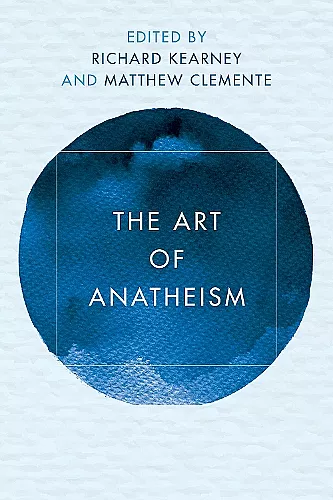The Art of Anatheism
Matthew Clemente editor Richard Kearney editor
Format:Hardback
Publisher:Rowman & Littlefield International
Published:12th Dec '17
Currently unavailable, and unfortunately no date known when it will be back
This hardback is available in another edition too:
- Paperback£41.00(9781786605214)

Theopoetics names the notion that the divine (theos) manifests itself as creative making (poiesis). Anatheism expresses the attendant claim that this making takes the form of a second creation – re-creation or creation again (ana) – where humanity and divinity collaborate in the coming of the Kingdom. The Art of Anatheism brings together philosophers, theologians, and artists to open up the question of the relationship between artistic creation and the divine. The book asks the question – how can God happen again after the death of God? It answers it by proposing an 'art of anatheism' which attends to the recreation and return of the divine through certain forms of literature, painting, liturgy, music, and performance. Engaging students, scholars, and interested readers across a wide range of disciplines – philosophy, theology, aesthetics, literary criticism, poetics – the volume includes contributions from both practising artists and professional academics. As such it brings together examples from ancient religious wisdom traditions and cutting-edge contemporary cultural practices to suggest that the sacred is often most potent and persuasive when recreating the everyday world of our secular experience.
We have known anatheism as a concept; now comes anatheism as the site of a debate. We measure the genius of an author or an idea, said Kant, by its capacity to “found a school.” The Art of Anatheism, convoking the greatest authors of the Continental (Jean-Luc Nancy) and Anglo-Saxon (John Caputo) traditions, here proves that anatheism, invented by Richard Kearney, is not an obscure idea. Anatheism becomes for today a new way of thinking transcendence in order to not reduce it to silence. Not confronting it would be to flee the challenges posed by our contemporary world. -- Emmanuel Falque, Professor of Philosophy, Catholic Institute of Paris
What have the muses to do with theology? This collection of vibrant and sensitive essays attends to tremors of the divine in literature and the arts. The space of theopoetic meditation thus opened challenges theology at its base, summoning it to embrace a larger and more richly human outlook. -- Joseph S. O'Leary, Sophia University and Surugadai University
The anatheist “return to God after God” takes on new dimensions in this remarkable collection, exploring how the divine (theos) manifests itself in the sacred activity of making (poiesis), and how making helps us to retrieve and re-experience the originary experiences of the call of the other and the risk of hospitality after the “death of God.” The essays—by artists as well as philosophers and theologians—sparkle with insight on how we might experience “God after God” in our concrete, lived existence. -- Brian Treanor, Charles S. Casassa Chair and Professor of Philosophy, Loyola Marymount University
Always the good teacher, Kearney explains himself clearly and concisely: [anatheism] is a return to God after God. That is, an invitation to rethink “God” after a very long period of withering criticism of theistic religion…. As one of Kearney’s most revered teachers in phenomenology, Levinas, used to say (in a slightly different context), one must be contre-dieu before one can be à-dieu, against God (or, better, a certain concept of God) before one can truly go toward him. It is a lesson that Kearney has learned well. * LA Review of Books, 25 November 2018 *
… as someone that finds this [the anatheist] project to have powerful theological and philosophical significance, this volume only expanded my appreciation for the project Kearney began in his Anatheism volume. If any religious hermeneutics worth its salt has explanatory power for religious art, then Anatheism has salt to spare. Those interested in aesthetics, religious art , or the phenomenology of religion will benefit greatly from reading the essays in this volume. * Pneuma, No. 40 *
The success of the Art of Anatheism lies in its exclusion of exclusions, its lowercase ecumenism, its ability to walk the walk of Anatheism’s talk of hospitality. The diversity of the contributors—artists, philosophers, theologians, poets, and pastors—and the vertiginous range of their discussion topic, from Buddhist art all the way to the Beatles, testify to the arrival of an idea with a universal application achieved only by true and timeless insight. * Reading Religion, 7 January 2019 *
ISBN: 9781786605207
Dimensions: 236mm x 160mm x 25mm
Weight: 617g
314 pages